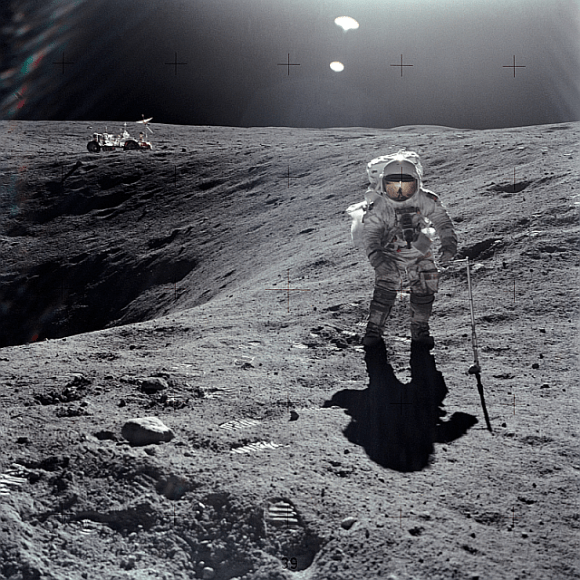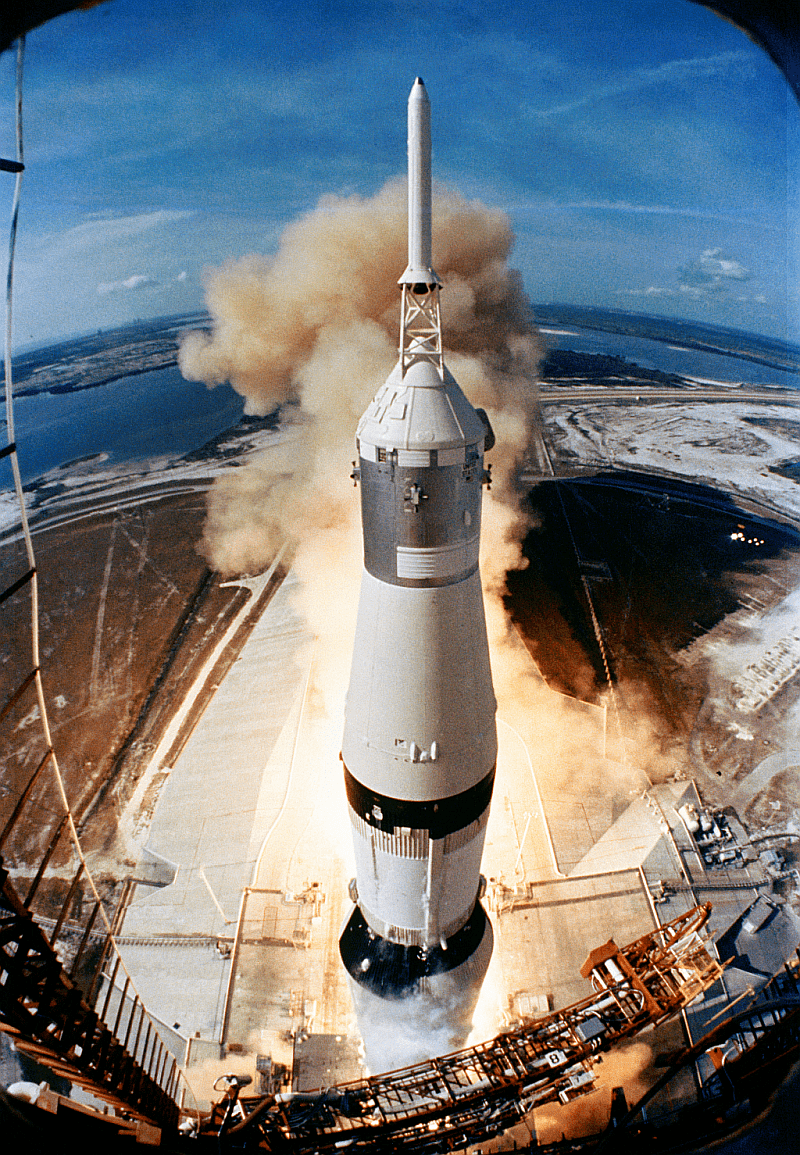A bag that travelled to the Moon and back is at the heart of a legal dispute involving NASA and a woman named Nancy Carlson. Carlson currently owns the bag and obtained it legally. But NASA is in possession of the bag, and the US Attorney’s Office wants the courts to quash Carlson’s purchase of the bag, so they can retain ownership of this important piece of space memorabilia.
The lawsuit over the lunar sample bags was first reported by Roxana Hegeman of the Associated Press, and covered by Robert Pearlman at collectspace.com.
The story of the Apollo 11 bag is bit of a tangled web. To understand it, we have to look at a third figure, Max Ary. Ary was the founder and long-time director of the Kansas Cosmosphere and Space Center. In 2005, Ary was convicted for stealing and selling museum artifacts.
Hundreds of space artifacts and memorabilia, some on loan from NASA, had gone missing. In 2003, the Apollo 11 bag was found in a box in Ary’s garage during the execution of a search warrant as part of the case against him. However, the bag was misidentified due to a spreadsheet error, and sold to Carlson at a government auction for $995.

NASA only found out about the Apollo 11 bag after Carlson purchased it. Carlson sent it to the Johnson Space Center in Houston to be authenticated. Once NASA realized what the bag was, they set the legal process in motion to set aside the forfeiture and sale. The US Attorney’s office argued that NASA was not properly notified of the bag’s forfeiture because it was not labelled properly.
NASA’s attorney’s wrote “NASA was denied the opportunity to assert its interest in the lunar bag. Had NASA been given notice of the forfeiture action and/or had all the facts about the lunar bag been known, the lunar [sample return] bag would never have gone to a government auction.”
The attorneys added that “The true identity and ownership of the lunar bag are now known. The failure to give proper notice to NASA can be corrected by setting aside the forfeiture and rescinding its sale,” they stated. “These are unusual circumstances that warrant the particular relief sought.”
If this seems like quite a bit of fuss over a bag, remember that this bag travelled to the Moon and back, making it very rare. Apollo 11 astronauts used it to collect the first samples from the Moon, and dust fragments from the Moon are embedded in its fabric. It’s a very valuable historic and scientific artifact. The government said in a statement that the bag is “a rare artifact, if not a national treasure.”
Carlson, who obtained the bag legally at an auction, is an attorney and is now suing NASA for “unwarranted seizure of my personal property… without any legal provocation.” This after she voluntarily submitted the bag to NASA for authentication, and after NASA offered to reimburse her purchase price and an additional $1,000 dollars “in appreciation for your assistance in returning the bag” and “to offset any inconvenience you may have suffered.”
There’s no question that artifacts like these belong in NASA’s public collection, and on display in a museum. But Carlson obtained the bag through a legal auction. Maybe, as the bag’s purchaser, Carlson is hoping that NASA will tender a larger offer for return of the bag, and she can make some profit. That’s pure speculation of course. Perhaps she’s just very keen on owning this piece of history.
As for Max Ary, the man who set all this in motion years ago, he is now out of prison and maintains his innocence. Ary collected other space artifacts and memorabilia and sold them from his home, and he claims that it was just a mix up. He was convicted though, and he served just over 2 years of his 3 year prison sentence. He was also ordered to pay $132,000 in restitution.
Sources: Collectspace.com, Roxana Hegeman (AP)


I’m no legal expert. But it seems that the sales was legitimate. If NASA wants that bad, it seems that they will have to offer a fair price. If that price is in the millions, so be it. They should have sought higher restitution from Max Ary or a court order asking him to reclaim and return all items on his dime.
Just FYI. Maybe Carlson will display the item in a museum? Anybody ever asked her what she plans on doing with it?
I’m reminded of John Houseman in The Paper Chase. “Mr. Hart, would you recite for us the facts of Carlson versus NASA?”
The most important question is why it appears that there is no fallout for the employee that made this spreadsheet error?
If an employee of any normal business made the mistake of selling an item that would probably bring 2 million dollars at Sotheby’s for $995, they would be fired.
This is a rhetorical question for anybody who has served in the military, or worked for the government.
i read that:
it was sold as a 1972 apollo 17 sample bag, unused.
ms Carlson just wanted it autenticated.
the first human moonlanding sample bag or an unused bag of the final apollo mission …
I’ld call that quite a difference.